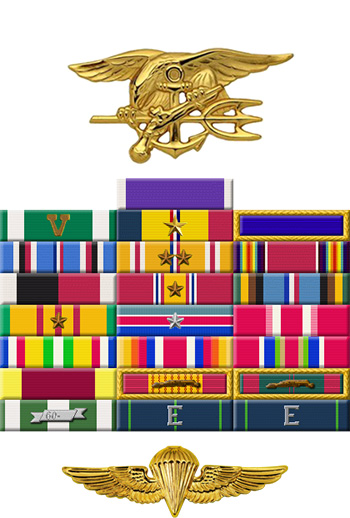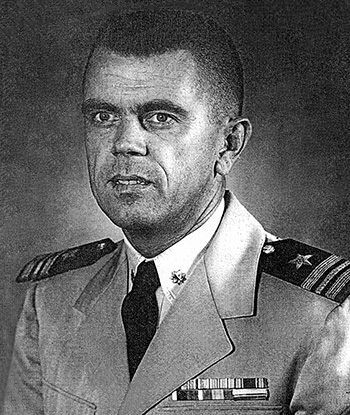
|
Robert J. Fay |
 |
|||
| Rank, Service | ||||
Commander O-5, U.S. Navy |
||||
| Veteran of: | ||||
|
||||
| Tribute: | ||||
Robert Fay was born on January 30, 1924, in Boston, Massachusetts. He entered the United States Merchant Marine on August 28, 1942, and served on ships in both the Atlantic and Pacific Theaters before receiving his U.S. Navy Reserve commission on July 29, 1943. LT Fay went on active duty in the Navy beginning on March 28, 1945, and his first assignment was as an Engineering Officer aboard the attack transport USS Hendry (APA-118) from March 1945 to February 1946. During this time he participated with his ship in the Battle of Okinawa. His next assignment was as Engineering Officer aboard the dock landing ship USS Colonial (LSD-18) from February to August 1946, followed by service as Engineering Officer aboard the high speed transport USS Burke (APD-65) from May 1947 to November 1948. LT Fay attended Gunnery Ordnance School from November 1948 to March 1949, and then served as Gunnery Division Officer aboard the aircraft carrier USS Coral Sea (CVA-43) from March 1949 to June 1951. He next attended Underwater Demolition Team Replacement training with Class 007 at NAB Little Creek, Virginia, from June 1950 to March 1951, followed by service with Underwater Demolition Team FOUR (UDT-4) at NAB Little Creek from March 1951 to July 1953. LT Fay attended General Line School from July 1953 to February 1954, and then served as Commanding Officer of the Underwater Swimmers School at Key West, Florida, from February 1954 to October 1955. His next assignment was as Chief of Staff for the Commander of Destroyer Squadron 16 at Naval Station Norfolk, Virginia, from December 1955 to March 1956, followed by service as Executive Officer aboard the destroyer USS Ault (DD-698) from March 1956 to August 1957. LCDR Fay served as Commanding Officer of the destroyer escort USS Kenneth M. Willett (DE-354) from August 1957 until her decommissioning on February 26, 1959, and then served on the Anti-Submarine Warfare/Combat Information Center Program staff for the Commander of the 8th Naval District in New Orleans, Louisiana, from March to July 1959. He was then given an assignment to complete his master's degree at the University of Mississippi in Oxford, Mississippi, from August 1959 to September 1960, followed by Explosive Ordnance Disposal (EOD) School at Indian Head, Maryland, from October 1960 to March 1961. CDR Fay served as Commanding Officer of the Navy EOD Facility at Indian Head from March 1961 to August 1962, and then as Commanding Officer of the destroyer USS Johnston (DD-821) from September 1962 to June 1964. His next assignment was as Commander of a deployed detachment of Naval Operations Support Group Atlantic from July to September 1964, and then as Chief of Staff of Naval Operations Support Group Atlantic at Naval Station Norfolk from October 1964 to March 1965. CDR Fay's final assignment was as Officer in Charge of the U.S. Naval Advisory Detachment in Da Nang, South Vietnam, part of the clandestine Studies and Observations Group with U.S. Military Assistance Command, Vietnam, from April 1965 until he was killed in action during a mortar attack on October 28, 1965. Robert Fay was buried at Arlington National Cemetery. He was the first United States Navy SEAL to be killed in action, although not the first to die on an actual combat mission. |
||||
|
||||

